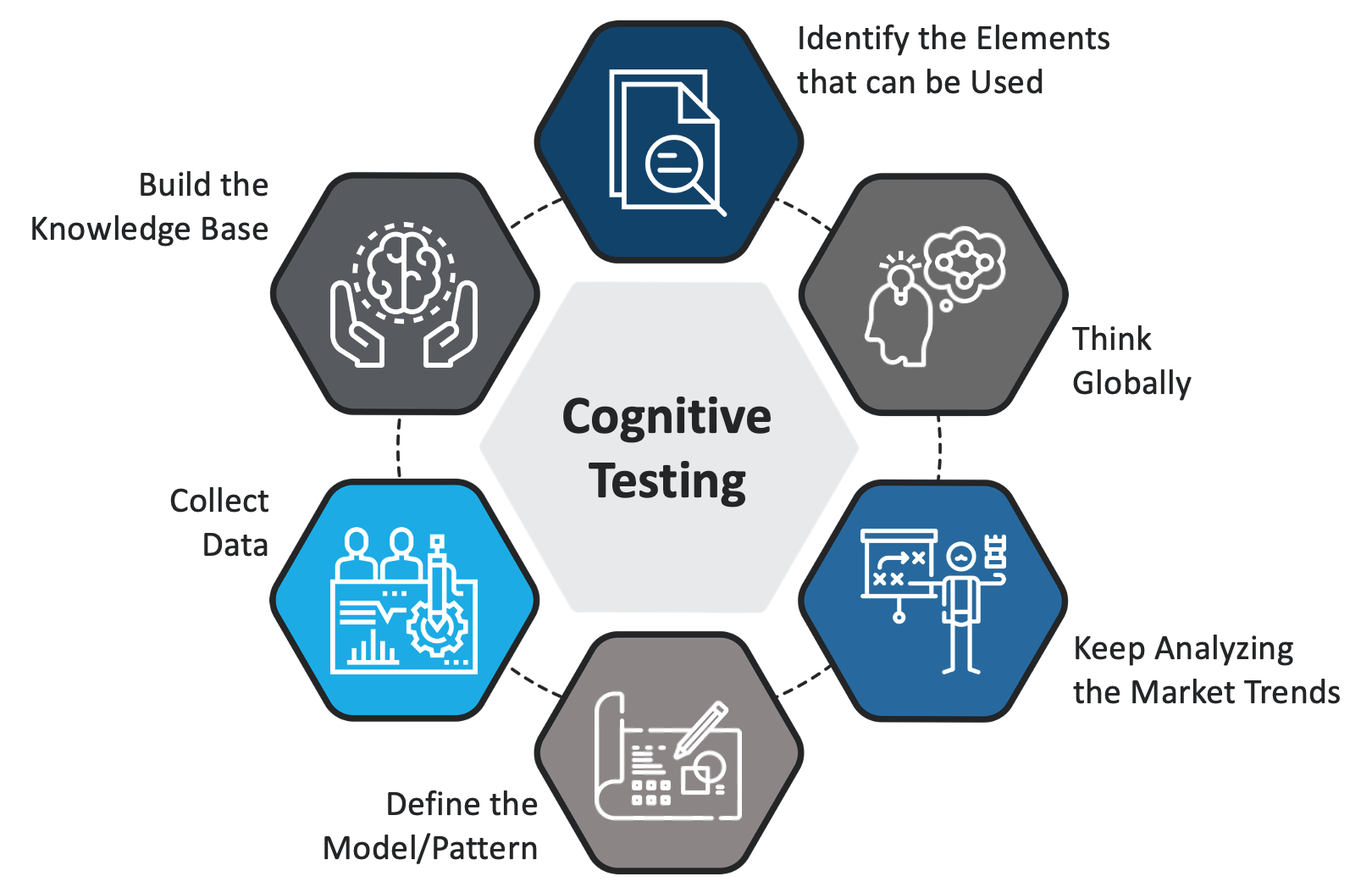What is Cognitive QA?
Cognitive QA is an intelligent and efficient way of doing testing and test automation. It involves Artificial Intelligence (AI), Robotic Process Automation (RPA), Analytics, and Smart Test Automation with real-time and quality dashboards. It helps organizations to test the right risk areas and increase testing coverage. It’s one of the best ways to do efficient test automation and plays an important role within the testing life cycle. With the Cognitive QA approach, you can accurately predict the application(s) quality, do real-time data processing for service efficiency, improvise your regression test suite, optimize test automation, and enhance testing coverage.
Key Principles

Artificial Intelligence (AI)
AI plays an important role in Cognitive QA. It uses real-time data, machine learning, and advanced analytical technologies. As machines or algorithms, there are no emotions or biases, allowing them to make decisions more objectively without any human influence. Machines keep learning the behavior and pattern of QA activities. Once we make machines learn whatever we need, this knowledge can be used for our QA/Testing needs. AI is used to optimize Enterprise Test Strategy and Predictive Analysis. Using Cognitive QA one can simulate the different real-time scenarios easily and predict the behavior of System Under Test and can validate the system under different real-time scenarios. Customers can see the results of the tests performed in the QA environment and uncover the defects at the right time and save significant defect fixing costs.

High-Level Testing Approach
- Testing Strategy
- Enhance the Regression Suite
- Requirements, TC’s, Defects Indexing and Classification
- Define the Framework
- Implement NLP and Data Analytics
- Implement Robust Scanning
- Real-time QA Dashboards with the Data
As per a recent Gartner report, organizations will start adapting to AI-driven development, AI Services, AI Platforms, Frameworks, and AI-based Infrastructure. AI-based development and Cognitive QA/Automated Developers are among the top 10 Industry trends. On the flip side, by 2020 50% of Organizations will lack sufficient AI and Data literacy skills!
Tool Sets
There are several commercial and open-source tools that are available in the market for Cognitive QA. There is NO single tool to manage Cognitive QA. Organizations will always have a combination of tools to implement Cognitive QA. Here are some of the tools,
- IBM SPSS
- IBM Watson
- TensorFlow
- Keras
- PyTorch
- UiPath
- Automation Anywhere
- Data Analytics Tools
Skill Sets Required
The resources should have strong technical, test automation, quality assurance, and process skill set to implement Cognitive QA. This includes the following,
- Technical – Strong programming (Python, etc) and Analytical skills, AI, RPA and DevOps
- Test Automation – Frameworks, TDD/BDD/ATDD, UiPath, Selenium, Cucumber, JUnit, UFT, etc
- Quality Assurance – Enterprise Testing Strategy, Planning, Metrics, etc
- Process – Agile, SDLC, CI/CD Process, QA and Testing Methodologies/Processes




